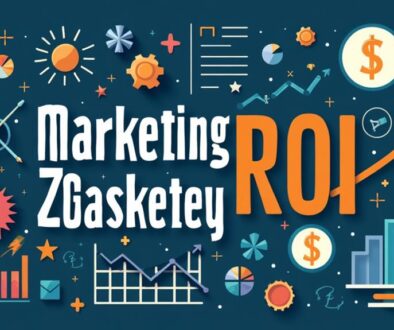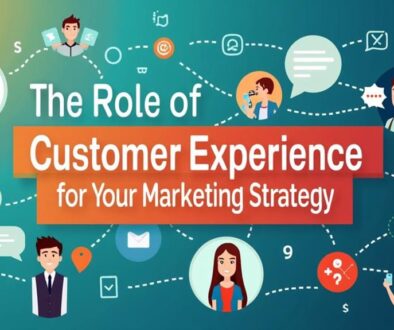The Importance of Testing and Optimization in Your Marketing Strategy
Testing and optimization are critical for refining marketing strategies. They enable marketers to gather user feedback, align campaigns with audience preferences, and stay responsive to market trends. Employing systematic testing methods, such as A/B and multivariate testing, enhances the effectiveness of messaging and segmentation. Additionally, data-driven decision-making fosters adaptability and improves campaign performance. Without continuous testing and evaluation, brands risk losing connection with their target audience. By embracing a culture of iterative improvement, organizations can guarantee sustained success and relevance in a dynamic marketplace. Discover how to implement these strategies further and enhance your marketing efforts.
Key Takeaways
- Testing and optimization enhance marketing effectiveness by aligning campaigns with user preferences and market trends.
- A/B and multivariate testing improve campaign performance through systematic evaluation of various elements and audience segmentation.
- Data-driven decision-making fosters adaptability to consumer behavior shifts, leading to improved engagement and stronger conversions.
- Continuous feedback loops support ongoing improvements, ensuring marketing strategies remain relevant and competitive over time.
- Cross-channel optimization creates a cohesive brand message, enhancing user experience and maximizing overall campaign effectiveness.
Understanding Testing and Optimization
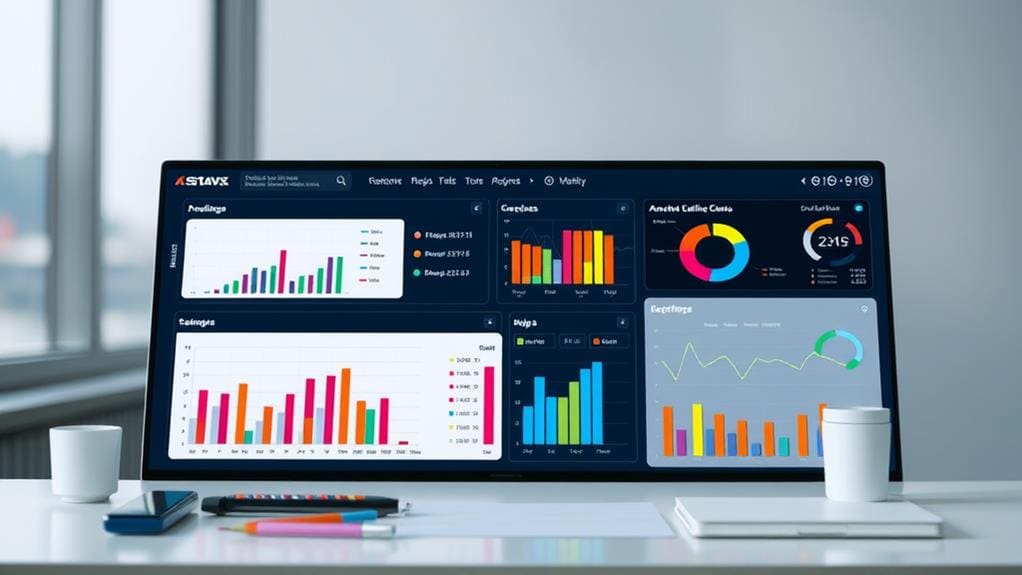
Testing and optimization serve as the backbone of an effective marketing strategy, allowing businesses to refine their approaches based on empirical data rather than assumptions. By prioritizing user feedback, marketers can enhance user experience, ensuring that campaigns resonate with their audience's preferences. Understanding market trends and conducting thorough competitor analysis are vital components that inform how businesses position their offerings.
Audience segmentation allows for more tailored messaging, ensuring that communications are relevant and engaging. This strategic alignment within campaigns enhances message clarity, enabling brands to cut through the noise and make a meaningful impact.
Creative testing plays a pivotal role in this process, as it allows companies to experiment with different messages, visuals, and formats, thereby identifying what truly engages their target audience. Establishing performance benchmarks is also essential to gauge the effectiveness of marketing initiatives. By comparing results against these benchmarks, businesses can quickly identify underperforming strategies and pivot accordingly.
Timing strategies further augment this optimization; understanding when to deliver messages can greatly influence conversion rates and overall success. Ultimately, the pursuit of a data-driven approach to marketing fosters an environment where freedom of creativity aligns with strategic effectiveness.
Embracing testing and optimization empowers organizations to make informed decisions, leading to campaigns that not only attract attention but also drive sustainable growth in an ever-evolving marketplace. Without this commitment to ongoing refinement, businesses risk stagnation in a landscape characterized by rapid change and fierce competition.
Benefits of Marketing Testing
A robust marketing testing framework reveals significant advantages that directly contribute to superior campaign performance. By systematically evaluating various elements of a marketing strategy, businesses can harness customer feedback to refine their approaches, enabling more effective engagement tactics. This iterative process allows brands to adapt their messaging and channels in line with current market trends, ensuring content relevance and resonance with target audiences.
Implementing innovative strategies through testing enables organizations to achieve better audience segmentation. Understanding the nuances of different demographic groups enhances the overall user experience, fostering deeper emotional connections with consumers. Consequently, well-optimized campaigns not only boost brand awareness but also improve conversion rates as prospective customers receive tailored interactions that speak directly to their needs and preferences.
Moreover, the continuous nature of marketing testing fosters a culture of adaptability, encouraging teams to be proactive in responding to shifts in consumer behavior and preferences. As brands become more attuned to the intricacies of their audiences, they can strategically pivot their efforts to maintain alignment with evolving demands. This agility translates to tangible improvements in campaign performance, as data-driven decisions lead to more impactful content and outreach efforts.
Ultimately, the benefits of marketing testing are clear: by leveraging insights derived from rigorous analysis, brands can implement strategies that not only elevate engagement but also drive long-term success in an increasingly competitive marketplace. Adopting this mindset empowers organizations to innovate constantly, enriching their marketing strategies while ensuring sustained growth.
Common Testing Methods
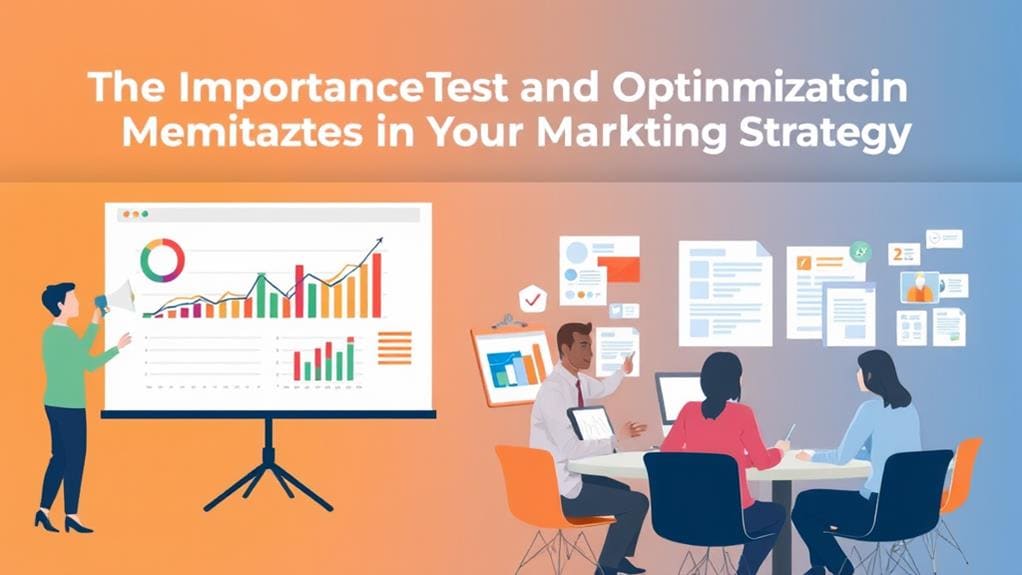
Various methodologies exist for marketing strategy testing, each tailored to extract valuable insights and drive decision-making. Among the most prevalent methods are A/B testing, multivariate testing, and user feedback surveys. These approaches facilitate in-depth analysis of user behavior and the corresponding impact on conversion rates, allowing marketers to refine their strategies.
A/B testing, a cornerstone of experimental design, involves comparing two variations of a marketing element to determine which performs better. This method capitalizes on hypothesis testing, providing clear, actionable results that align with predetermined performance benchmarks.
Meanwhile, multivariate testing expands on this by evaluating multiple variables simultaneously, thereby uncovering the most effective combinations that resonate with distinct audience segments.
Furthermore, user feedback serves as a vital tool, delivering qualitative insights that quantitative metrics alone may overlook. This duality enhances user understanding and contributes to refining marketing efforts. By analyzing these insights, marketers can adapt their strategies through iterative processes, ensuring continuous improvement.
Testing tools play a significant role in prompting enhanced efficiency and streamlined result analysis. These resources enable practitioners to track performance meticulously and facilitate swift adaptations in response to shifting user preferences.
Ultimately, integrating varied testing methods not only fosters deeper audience segmentation but also cultivates a culture of freedom in decision-making. This strategic flexibility empowers marketers to pivot quickly, creating a dynamic marketing landscape that embraces change and responds effectively to the ever-evolving market realities.
Key Metrics to Track
Understanding and monitoring key metrics is essential for evaluating the effectiveness of any marketing strategy. The right metrics illuminate the pathways through which a business can connect with its audience, ultimately driving impactful results.
Among the most significant metrics to track are conversion rates, which reveal the effectiveness of your campaigns in turning prospects into customers. High conversion rates indicate successful audience targeting and lead generation efforts, whereas lower figures may highlight weaknesses in your sales funnel that require rectification.
Customer engagement serves as another important metric, underscoring how effectively your brand resonates with your target audience. Enhanced engagement fosters brand awareness, paving the way for deeper connections and loyalty.
Analyzing market segmentation reveals which segments of your audience are responding well, enabling more tailored strategies to meet their specific interests.
Furthermore, evaluating campaign performance allows marketers to determine which strategies yield the best return on investment (ROI). This insight informs future allocation of resources and optimization efforts.
Additionally, focusing on user experience can reveal pain points within the customer journey, guiding improvements that streamline interactions and bolster satisfaction.
In this dynamic landscape, consistently tracking these metrics is not merely an option, but a necessity. By embracing informed strategies and agile adjustments based on data, brands can achieve unprecedented heights of freedom and success in their marketing endeavors.
A/B Testing Vs. Multivariate Testing
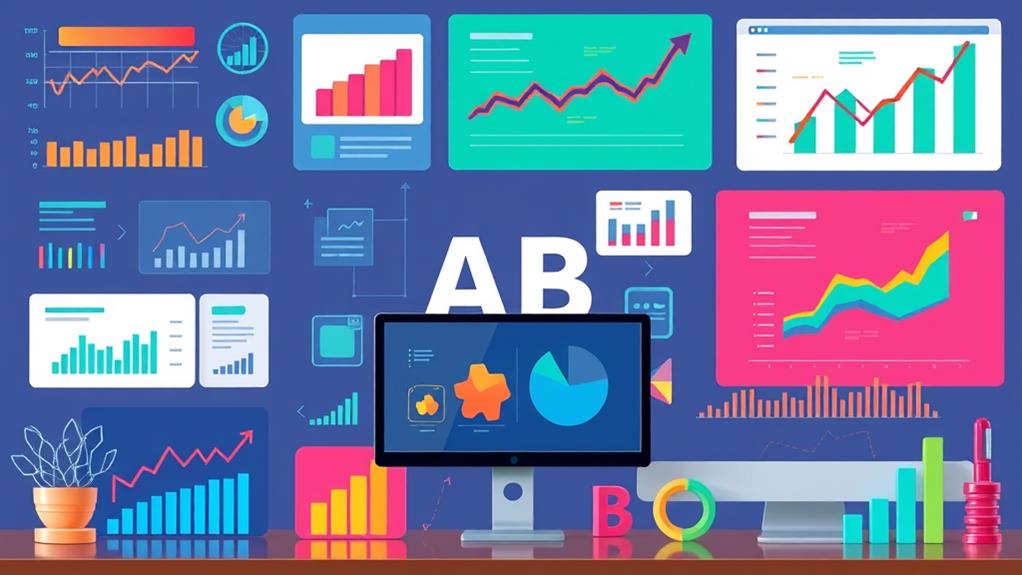
A/B testing and multivariate testing serve distinct purposes in evaluating marketing strategies, with each offering unique advantages depending on the campaign's objectives.
A/B testing focuses on comparing two variations of a single element, while multivariate testing examines multiple elements simultaneously to fine-tune complex interactions.
Understanding these key differences is essential for marketers to choose the most effective method for their specific testing needs, ultimately optimizing performance and enhancing decision-making.
Key Differences Explained
While both A/B testing and multivariate testing are vital tools in the marketer's toolkit, they differ considerably in their approaches and applications. Understanding these differences is important for effective optimization strategies and maximizing conversion rates.
- Focus Area: A/B testing compares two distinct content variations, allowing for clear identification of the winning element. In contrast, multivariate testing examines multiple variables simultaneously, providing insights into how different combinations influence user experience.
- Complexity: A/B testing is straightforward and ideal for quick campaign adjustments, whereas multivariate testing is more intricate, requiring careful audience segmentation and a larger sample size to establish performance benchmarks effectively.
- Time Efficiency: A/B testing typically yields faster results, making it suitable for iterative feedback loops. Multivariate testing, though detailed, may take longer to draw conclusions, necessitating patience once variations are deployed across marketing funnels.
Choosing the Right Method
Selecting the appropriate testing method is fundamental to harnessing the full potential of marketing strategies. A/B testing and multivariate testing each possess unique advantages that can dramatically influence user segmentation and audience targeting.
A/B testing is ideal for swift iterations and delivering clear insights from comparatively simple experimental designs, enabling marketers to quickly adjust their strategies based on robust result interpretation. However, it is limited to evaluating one variable at a time, which may overlook the complexity of user behavior.
Conversely, multivariate testing allows for more thorough testing of various variables simultaneously, thereby enhancing the testing frequency when analyzing multiple elements of a campaign. This approach fosters deeper hypothesis generation, enabling the discovery of subtle interactions among elements. However, it requires a more advanced understanding of optimization tools and meticulous experimental design.
Ultimately, the choice between these methods should align with your performance benchmarks and strategic objectives. Emphasizing feedback loops will also guarantee continuous improvement.
Integrating Optimization Into Strategy
Integrating optimization into marketing strategy requires a robust framework that emphasizes data-driven decision making.
By adopting a continuous improvement approach, organizations can refine their tactics over time, ensuring that every marketing initiative is informed by real-time insights.
Additionally, employing cross-channel optimization techniques allows for a cohesive strategy that maximizes effectiveness and drives overall performance across diverse platforms.
Data-Driven Decision Making
In today's competitive marketplace, organizations increasingly recognize the importance of data-driven decision making as a cornerstone for effective marketing strategies. By leveraging data analysis and performance metrics, businesses can create robust decision frameworks that guide their marketing efforts, guaranteeing alignment with broader strategic objectives.
Key components of data-driven strategies include:
- Consumer Insights: Understanding the desires and behaviors of various market segments allows marketers to tailor their approach for maximum impact.
- Predictive Modeling: Utilizing historical data to forecast future trends enables businesses to allocate resources more effectively and anticipate market changes.
- Actionable Results: Transforming data into insights that can be acted upon is essential for achieving marketing goals and driving growth.
Incorporating these elements guarantees that strategies are not only informed by empirical evidence but are also adaptable to evolving market dynamics.
By fostering a culture that values data-driven insights, organizations can optimize their performance and enhance collaboration across teams.
Ultimately, embracing data-driven decision making empowers businesses to navigate the complexities of the marketplace with confidence and clarity, ensuring that every marketing effort is both relevant and impactful.
Continuous Improvement Framework
While establishing a marketing strategy is essential, continuously enhancing that strategy through a robust Continuous Improvement Framework is important for sustained success. This framework fosters an environment where feedback loops stimulate growth, allowing for agile methodologies to be employed throughout the marketing lifecycle.
By integrating iterative processes, organizations can refine their tactics based on data collected from user engagement and performance reviews, aligning both strategic goals and tactical execution.
Stakeholder involvement is significant, as it not only lends diverse perspectives but also enhances commitment to the improvement process. Regular performance assessments create innovation cycles that empower teams to pivot quickly in response to market demands, thereby maintaining competitive advantage.
Additionally, aligning team efforts with overarching business objectives guarantees that every improvement endeavor directly contributes to the overarching strategic vision.
Incorporating a Continuous Improvement Framework guarantees your marketing strategy remains dynamic and responsive. By committing to this iterative approach, businesses can foster a culture of excellence, enabling them to adapt and innovate in an ever-evolving marketplace, ultimately achieving greater freedom and flexibility in their marketing endeavors.
Cross-Channel Optimization Techniques
Effective marketing strategies hinge not only on the refinement of individual tactics but also on the seamless integration of various channels to guarantee a cohesive customer experience.
Cross-channel optimization is essential to confirm that efforts in social media, email campaigns, and paid advertising complement one another, driving user engagement and ultimately increasing conversions.
To achieve effective cross-channel optimization, consider the following techniques:
- Audience Segmentation: Tailor your content marketing strategies to specific audience segments to enhance relevance and response rates.
- Channel Synergy: Create a harmonized brand message across platforms, ensuring consistent user experience that reinforces your brand identity.
- Utilize Feedback: Leverage customer feedback and performance benchmarks to refine engagement metrics, allowing your campaigns to adapt swiftly to changing demands.
The Role of Data Analytics

Data analytics serves as a cornerstone in the development and refinement of marketing strategies, as it allows organizations to derive actionable insights from vast datasets. By leveraging data visualization tools, marketers can present complex information in an easily digestible format, enhancing understanding and decision-making. This clarity fosters a strategic approach to customer segmentation, enabling brands to tailor their offerings to specific demographics and behaviors, which is crucial in creating personalized user experiences.
Predictive analytics plays a significant role in forecasting future trends, allowing marketers to anticipate customer needs and align their strategies accordingly. With real-time analysis, businesses can adjust their tactics swiftly, optimizing campaigns based on immediate feedback. This responsiveness not only improves data integrity but also enhances overall campaign effectiveness.
Dashboard reporting brings all relevant metrics together, encouraging extensive trend identification that supports informed strategic planning. By systematically analyzing behavioral insights, marketers can uncover patterns that lead to better engagement and retention strategies.
The synergy of these analytical components empowers organizations to make data-driven decisions that enhance their marketing effectiveness.
In an era where consumer freedom is paramount, leveraging data analytics gives businesses a competitive edge. It empowers them to be proactive rather than reactive, creating campaigns that resonate deeply with target audiences.
Ultimately, incorporating a robust data analytics framework within a marketing strategy is essential for maneuvering the complexities of the modern marketplace, ensuring sustainability and growth.
Case Studies and Success Stories
Case studies and success stories serve as powerful exemplars of how innovative marketing strategies, underpinned by data analytics, can lead to remarkable business outcomes.
By examining real-world examples, businesses can discern what strategies resonate with their target audiences, enabling them to craft impactful campaigns that not only reach but also engage effectively.
- Coca-Cola's "Share a Coke" Campaign: This campaign tailors marketing efforts by personalizing bottles with common names. The result? A 7% increase in sales as consumers experienced an emotional connection with the product, emphasizing the effectiveness of personalization.
- Airbnb's Targeted Email Marketing: By utilizing data analytics to segment their audience, Airbnb crafted targeted email campaigns that showcased tailored travel experiences. This strategy led to a 200% increase in engagement rates, highlighting the effectiveness of leveraging consumer data for personalized outreach.
- Nike's 'Dream Crazy' Campaign: Centered around inspiring customers, Nike utilized storytelling as a marketing strategy. Supported by data on consumer sentiment, this impactful campaign resulted in significant social media engagement and a 31% increase in sales in the months following its launch, proving the power of aligning marketing messages with consumer values.
These case studies reveal the necessity of constantly analyzing data and testing strategies.
In an ever-changing landscape, freedom in creativity, guided by proven analytics, empowers brands to craft compelling narratives and effective calls to action, ultimately driving remarkable business outcomes.
Continuous Improvement Cycle
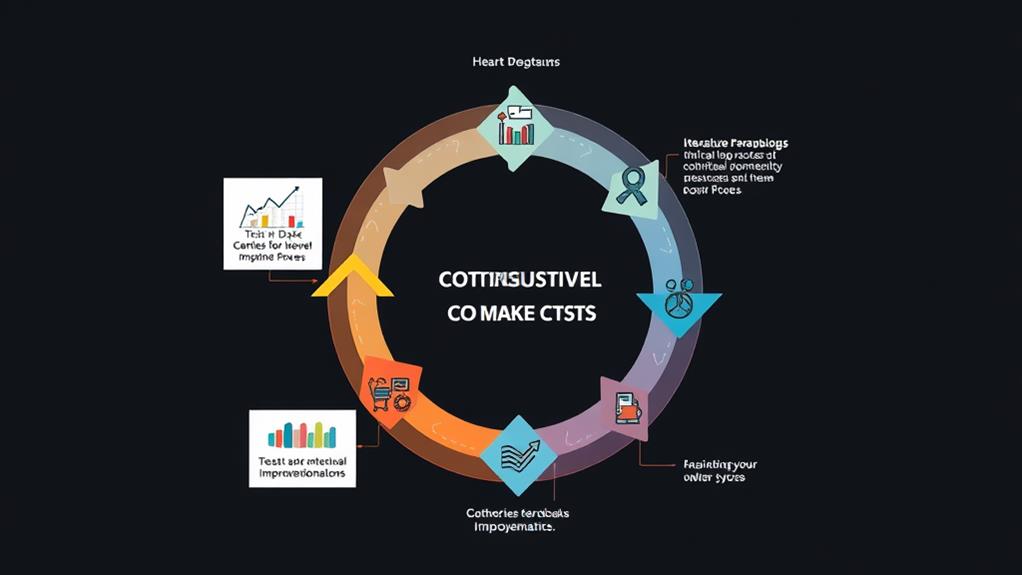
To achieve sustained success in marketing, organizations must embrace a continuous improvement cycle that systematically evaluates and enhances their strategies. This iterative process allows brands to respond dynamically to shifts in consumer behavior, thereby optimizing user experience and driving higher conversion rates.
Central to this cycle is the establishment of feedback loops, which provide valuable customer insights that inform strategic adjustments. Agile marketing embodies this philosophy by prioritizing adaptability and responsiveness.
By regularly conducting performance reviews, marketers can analyze data trends and segment their audience effectively. This segmentation facilitates targeted campaigns that resonate with specific customer groups, ensuring that marketing efforts yield maximum impact.
Moreover, integrating customer feedback into the improvement cycle helps identify pain points in the user experience. By addressing these concerns, organizations can not only enhance satisfaction but also foster brand loyalty. Enhanced user experiences directly correlate with improved conversion rates, making this continuous improvement imperative for competitive advantage.
Ultimately, the continuous improvement cycle is not a one-time initiative but an ongoing commitment to innovation and excellence. It empowers organizations to remain attuned to their audience, enabling them to refine their strategies continuously.
In an ever-evolving market landscape, embracing this cycle will not only lead to better marketing outcomes but also align businesses with the freedom to pivot and evolve as required, ensuring long-term sustainability and success.
Frequently Asked Questions
How Often Should I Conduct Marketing Tests?
To maximize marketing effectiveness, conducting A/B testing quarterly is recommended, allowing for systematic data analysis and timely adjustments based on performance metrics.
However, user feedback should continuously inform your strategy, enabling agile responses to market dynamics.
Aspiring for freedom in your marketing approach means embracing flexibility; therefore, remain open to more frequent testing during significant shifts in customer behavior or product launches.
This iterative process guarantees you consistently align with audience expectations and preferences.
What Budget Should I Allocate for Testing and Optimization?
Determining the right budget for testing and optimization is akin to steering a ship through uncharted waters. Allocate approximately 10-20% of your overall marketing budget towards this endeavor.
This investment enables the application of various testing metrics to fine-tune your optimization strategies.
Can Testing Be Applied to Social Media Marketing?
Testing is an essential component of social media marketing, enabling brands to enhance their strategies through A/B testing and audience segmentation.
By analyzing content performance across different platforms, marketers can identify the most effective messaging and visual styles. Engagement metrics provide crucial insights, guiding campaign iteration for best results.
Utilizing these methodologies not only refines marketing efforts but also empowers brands to connect more authentically with their target audience, fostering improved customer relationships.
What Tools Can Help With Testing and Optimization?
In the fast-paced digital landscape, leveraging advanced tools is essential for optimizing marketing strategies. A/B testing platforms like Optimizely enable data analysis to discern which campaigns perform better.
Meanwhile, user feedback gathered via SurveyMonkey can guide decisions on messaging. Tools such as Crazy Egg offer heat maps to visualize user engagement, while Experiment design frameworks help structure tests effectively.
How Do I Get Team Buy-In for Testing Initiatives?
Securing team buy-in for testing initiatives necessitates strategic stakeholder engagement, highlighting the benefits of data-driven decisions.
Begin by illustrating how testing can enhance overall performance and support individual team goals. Present compelling data that emphasizes the value gained from previous initiatives, fostering confidence in the process.
Encourage open dialogue to address concerns, reinforcing that optimization is a team effort aimed at increasing autonomy and maximizing outcomes.
Empower your team by sharing ownership of testing initiatives.
Conclusion
In a world where marketing strategies often resemble a game of darts played blindfolded, the importance of testing and optimization cannot be overstated. As brands flounder in a sea of guesswork, embracing data-driven methodologies emerges as the beacon of hope. Continuous refinement, driven by rigorous testing and analytics, transforms mediocre campaigns into successful endeavors. Ultimately, the difference between relevance and obscurity hinges on the willingness to embrace a culture of relentless optimization.


